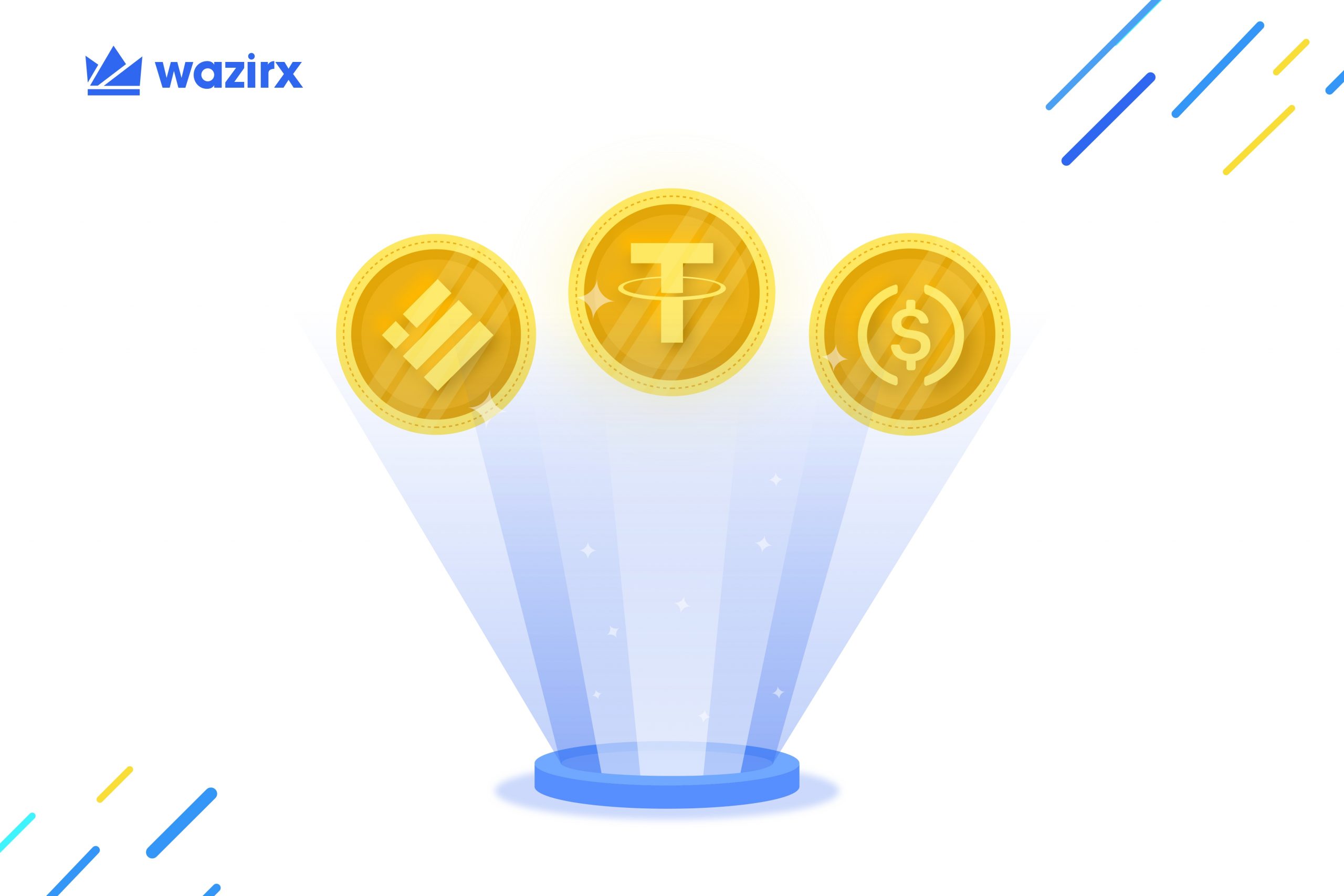Stablecoin: The Next Big Thing in E-Commerce
Have you ever heard about Bitcoin Pizza Day? In 2010, Laszlo Hanyecz, a U.S.-based programmer, agreed to pay somebody 10,000 bitcoins in exchange for 2 Domino’s pizzas. The two pizzas he bought that day were worth $ 30 on May 22, 2010. 10,000 bitcoins amount to a staggering $ 100 million today!
That was the first instance when goods were purchased using cryptocurrency.
Moral of the story: Bitcoin and its brethren, being a notoriously volatile tender of exchange, are far from being accepted as a currency fit for day-to-day purchases today. Still, the potential is acknowledged, the issues persist. But do we have a solution? Let’s watch out.
The Hype

Interest in the digital currency was further piqued when the Federal Reserve announced that it was investigating the possibility of issuing its own digital coin. Federal Reserve Governor Lael Brainard noted the “potential for digitalization to deliver greater value and convenience at lower cost”. Just as Amazon and Paypal revolutionized the way people shopped online, digital payment solutions backed by blockchain technologies could be the next great revolution in e-commerce. While we find banks shying away from supporting cryptocurrencies, few central Banks across the globe seem to be intent on issuing their own brand of CBDCs- Central Bank Digital Currency.
The Issues
Despite all the hype about cryptocurrencies subverting the financial systems and making cash out-of-date, the DLT powered popular tokens are too wayward and complicated to go mainstream. Moreover, cryptocurrencies are seen more as an investment avenue rather than a spendable currency owing to the expected future returns of coins like Bitcoin, Ethereum, and others. Another area of concern is, unlike fiat currency, cryptocurrencies aren’t backed or governed by any monetary authority. How do cryptocurrencies then intend to make themselves better adapted for digital adoption? The answer is Stablecoins.
The Solution

Stablecoin: the nomenclature of the coin itself defines it. It is a new species of cryptocurrency that offers price stability and is backed by a real-world asset. A Stablecoin can be backed by fiat, gold, oil, or even cryptos. It may also use a working mechanism to control the supply of coins to maintain the price just like a central bank does. Thus, it resists the price volatility synonymous with popular coins like Bitcoin while offering the merits of cryptocurrencies- privacy, security, and instant processing.
For a currency to become a medium of exchange, it should be able to retain its purchasing power and have tenable inflation rates such that people are encouraged to spend rather than save it. Traditional fiat currencies serve the same being backed by reserves and regulated by a central monetary authority. Stablecoins intend to bridge this gap between cryptocurrency and fiat money.
Why is Stablecoin touted to become the next big thing in e-commerce?
For Digital currencies to go mainstream the requirements become four-fold, namely:
- Appropriate technology
- Consumer demand
- Corporate champions, and
- An amenable regulatory environment.
Let’s gauge its worth based on the above four conditions:
Appropriate Technology
As already discussed, the classic cryptocurrencies seem unfit to be used as a mode of exchange given their volatile status. Stablecoins solve this problem by using a variety of approaches, i.e. via real-asset backing or working mechanisms. For instance, Terra is a new Stablecoin being adopted by many online merchants across Southeast Asia. To keep its prices stable, it employs an automated monetary policy. Since it is directly coded on its blockchain, it assures transparency and zeroes human interference.
From a business’s point of view, cryptocurrencies like Bitcoin are ill-fitted because of their huge values. For instance, you purchase a book online and decide to pay in Bitcoin or some other popular currency. The cost of the books comes out to be 0.000048 Bitcoin. Feasible? No, The complexity of payment options doesn’t work in the business’s favor. Management issues such as accounting, future growth predictions, revenue analysis will go haywire each time Bitcoin fluctuates. (And it does fluctuate up and down a few percent within a day itself!) Being pegged to a fiat currency or reserve, Stablecoin can provide more efficient and economical payment options.
Consumer demand
An estimate by Santander InnoVentures claims that “blockchain technologies could reduce banks’ infrastructural costs by $ 15-20 billion a year by 2022.” Cost-effective payment solutions are a sure-shot lure to attract customers and improve the reach in different segments. Square, a popular merchant services aggregator, accounts for its success in the lower fees it offers to attract small businesses. The shift from paper currency to plastic money, though convenient, has its own share of inefficiencies. The system relies on middlemen and manual verification which accentuates transaction costs. Credit card providers charge up to 3% commission per transaction. Blockchain removes the need for middlemen and automates the verification processes saving on valuable resources.

Employing digital payment solutions via Stablecoins could mean banking the unbanked and the underbanked. Customers would prefer coins over cards in the near future given the general mistrust of the millennials in the traditional banking system and the mounting popularity of cryptocurrencies. Since its launch in 2019, Terra has experienced massive growth at 35% each month with a customer base of 1 million. Users frequently use it to make payments such as groceries, hotel bookings, etc.
Corporate Champions
Stablecoin has already started earning its share of global champions and gaining recognition from renowned innovators such as:
- JP Morgan recognized the requirement of a digital currency payment solution.
- Challenger Banks such as Revolut now accept cryptocurrencies.
- Jack Dorsey’s Square patented its network which allows customers payments in cryptocurrency and merchant receipts in the equivalent value of US dollars.
- Major retailers such as Starbucks and Overstock.com accept cryptocurrencies as payment.
- CBCDs by central banks.
- The list would be incomplete without the mention of Facebook’s Libra which lost its cause amidst controversies but was able to garner the much-needed attention.
An amenable regulatory environment
Stablecoin passes the first three conditions but lacks on the regulatory front. Banks are still skeptical to back cryptocurrencies in the fear that the monetary policy would set off towards commercial enterprises. Monetary policy and regulations are of prime importance to central banks to manage the money supply and inflation in the economy. Losing control over it could make the entire financial system vulnerable to hacking, cyber-attacks, and misuse. Data security is another issue given Facebook’s controversial stint on the private fund.
We can hope that an amenable regulatory policy for cryptocurrencies such as Stablecoin soon surfaces in the near future to boost mass adoption. Blockchain currencies still need to jump some major hurdles before they reach the finish line of mainstream adoption in the e-commerce world. Research by Chainalysis stated that a mere 1.3% of the total cryptocurrency transactions were related to merchant transactions, Bitcoin being the primarily used coin, in the first four months of 2019. Stablecoin, with its potential to break the barriers, seems likely to sway the e-commerce market to its digital clink backed by the testimonies of some key champions and innovators.
Digital & Social Articles on Business 2 Community
(55)


